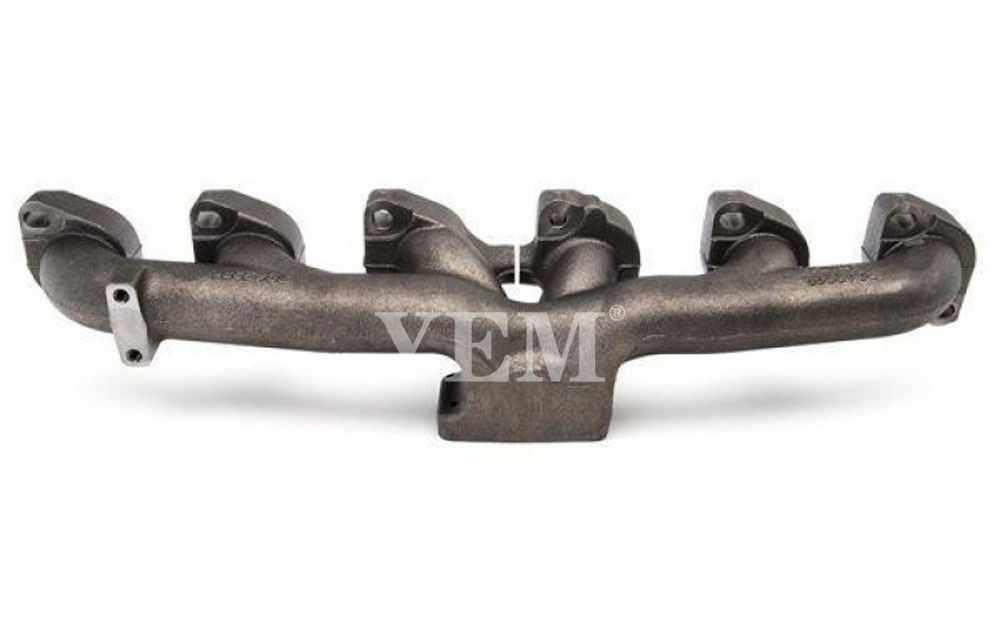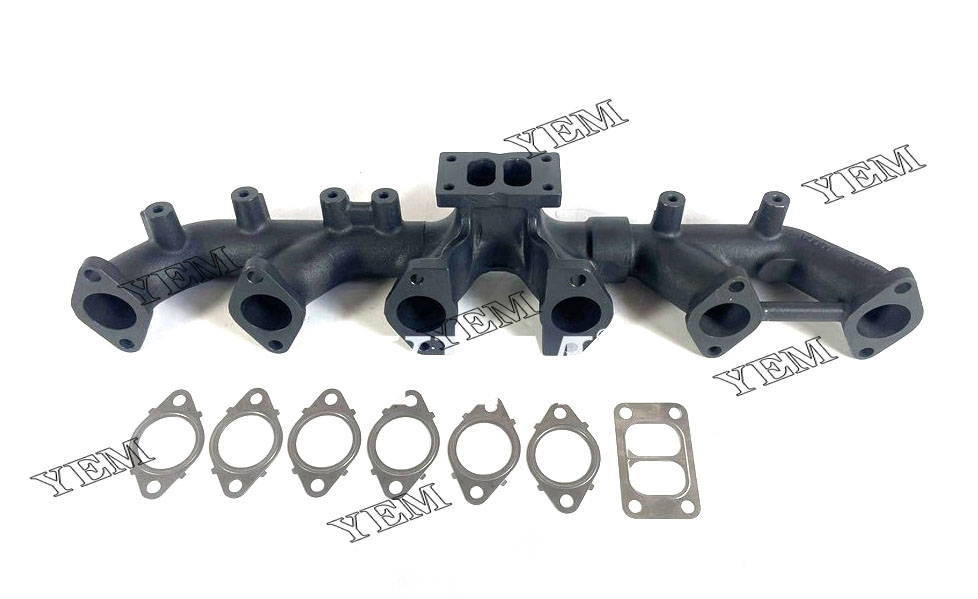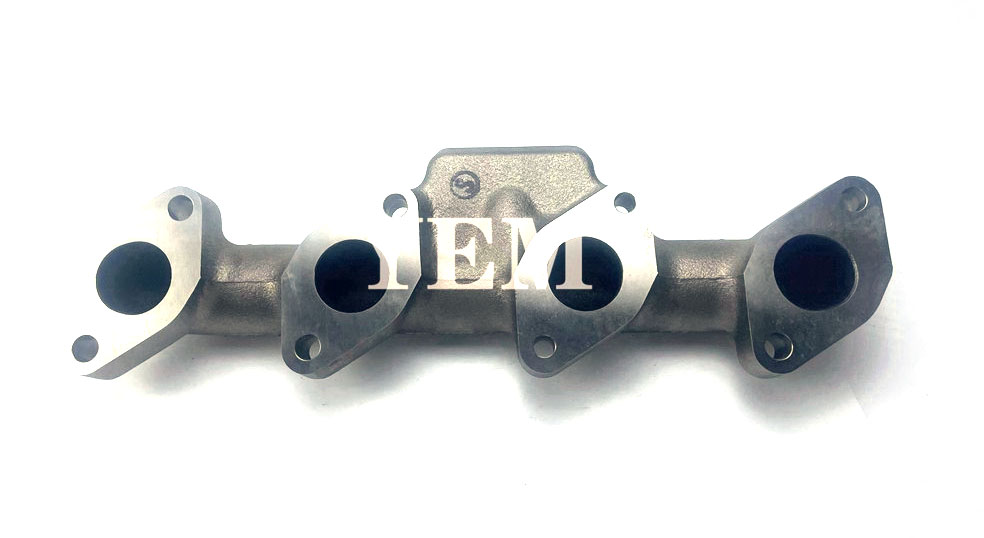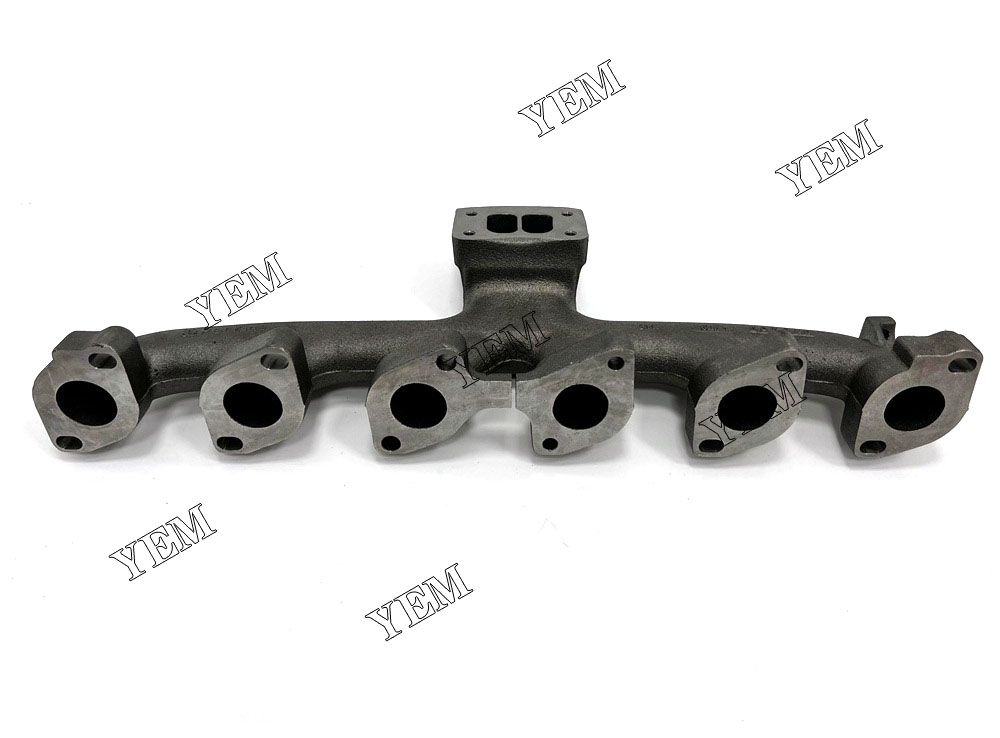The function of exhaust branch pipe
The exhaust branch pipe plays a very important role in the engine exhaust system. Its main functions can be summarized as follows:
- Guide and transmit exhaust gas: The exhaust branch pipe is connected to the exhaust port of the engine and guides the exhaust gas generated by the engine into the exhaust pipe. It acts as a transporter for exhaust gases from the engine to other parts of the exhaust system.
- Reduce pressure and resistance: The exhaust branch pipe reduces the pressure and resistance in the exhaust system during the exhaust gas transmission process. By correctly designing and adjusting the length, diameter, and bending angle of the exhaust branch pipe, you can help reduce the accumulation of exhaust gas, improve exhaust efficiency, and mitigate the negative impact on engine performance.
- Sound control: The exhaust branch pipes in the exhaust system also play a role in controlling engine exhaust noise. By rationally designing the internal flow channel structure of the branch pipe and selecting structural materials, sound absorption and shock absorption effects on exhaust noise can be achieved, making the engine exhaust sound softer and deeper.
- Exhaust gas treatment and emission control: The exhaust branch pipe helps guide the exhaust gas to the exhaust purification device in the exhaust system, such as a catalyst or particle trap, etc., to treat and purify the exhaust gas to meet environmental protection requirements, and Emitting cleaner exhaust gases into the atmosphere.
To sum up, the exhaust branch pipe plays an important role in the engine exhaust system. It not only guides and transmits exhaust gas, reduces pressure and resistance, but also plays a role in sound control and exhaust gas treatment.

Choosing the right material for the exhaust manifold is important as it needs to be able to withstand extreme conditions such as high temperatures and corrosion. The following are common material choices for exhaust manifolds:
- Stainless steel: Stainless steel is one of the most common exhaust manifold materials. It is corrosion-resistant and high-temperature resistant and can withstand the high temperatures and corrosive substances of engine exhaust gases. Stainless steel exhaust manifolds are durable, easy to process and maintain, while also providing good airflow characteristics to help the exhaust flow smoothly.
- Titanium alloy: Titanium alloy is a lightweight but high-strength material and is also widely used in the manufacture of exhaust branch pipes. Titanium alloy has good high temperature resistance and corrosion resistance, and is lighter than stainless steel, helping to reduce the weight of the entire exhaust system. In addition, the high strength and rigidity of titanium alloy can improve the performance of the exhaust system and have good shock resistance.
- Nickel alloy: Nickel alloy is a material with excellent high temperature resistance and corrosion resistance. It is widely used in the manufacture of high-performance engines and exhaust systems. Nickel alloy exhaust branch pipes can withstand high-temperature exhaust gases while resisting acidic and corrosive chemical components, maintaining structural stability and longevity.
Overall, stainless steel, titanium alloys, and nickel alloys are high-quality materials commonly used to manufacture exhaust manifolds. The specific selection of materials should take into account factors such as expected exhaust temperatures, environmental conditions, performance requirements and budget, and ensure that the materials can meet the durability, high temperature resistance and corrosion resistance requirements of the exhaust branch pipe.

Exhaust branch pipe design
Exhaust manifold design is critical to engine performance and emissions control. Here are some key considerations for exhaust manifold design:
- Exhaust pipe diameter: The selection of exhaust pipe diameter should be designed based on the engine’s exhaust volume and expected performance goals. A larger exhaust pipe diameter helps improve exhaust gas flow and exhaust efficiency, but an excessively large pipe diameter may result in the loss of excessive exhaust gas relative velocity and reduced performance.
- Bend angle: The bend angle in the exhaust branch pipe is critical to the exhaust flow and the overall layout of the exhaust system. A bend angle that is too small may cause exhaust gas accumulation and flow obstruction, while a bend angle that is too large will increase the overall pressure loss of the exhaust system.
- Exhaust branch pipe length: The length of the exhaust branch pipe has a great impact on exhaust flow and performance. A shorter exhaust branch pipe can reduce exhaust gas accumulation and pressure loss in the exhaust system, but an exhaust branch pipe that is too short may affect the cooling and noise reduction effects of the exhaust gas.
- Internal flow channel design: The internal flow channel design of the exhaust branch pipe can optimize the flow of exhaust gas by changing the shape and adding internal partitions. Well-designed internal flow passages can improve exhaust efficiency, reduce pressure loss and noise, and help control emission levels of emissions.
- Material selection: The correct selection of materials that are resistant to high temperatures and corrosion is very important. Materials such as stainless steel, titanium alloys and nickel alloys are often used to manufacture exhaust manifolds to ensure they can withstand the high temperatures and corrosive exhaust gases.
To sum up, the design of the exhaust branch pipe includes considerations such as exhaust pipe diameter, bending angle, length, and internal flow channel design. Designers need to consider factors such as expected performance targets, engine parameters, and material properties to ensure that the design of the exhaust manifold can achieve the best exhaust flow and performance results.
Maintenance and Troubleshooting of Exhaust Branch Pipes
Exhaust manifold maintenance and troubleshooting are critical to ensuring proper engine operation and emissions control. Here are some common maintenance and troubleshooting suggestions:
- Regular inspection: Regularly check the appearance of the exhaust branch pipe, including whether there is any corrosion, damage or cracks. Pay special attention to the connections between the exhaust manifold and other components to ensure a good seal.
- Cleaning and anti-rust treatment: Clean the surface of the exhaust branch pipe regularly to remove dust and impurities. For stainless steel exhaust manifolds, use a specialized stainless steel cleaner and make sure to clean and dry them thoroughly to prevent rust.
- Maintenance of seals and fixings: Seals and fixings are usually used at the joints of the exhaust branch pipes. Make sure these parts are in good condition and tight to prevent gas leaks.
- Troubleshooting: If it is found that the exhaust branch pipe is leaking, damaged or blocked, necessary maintenance measures should be taken in time. For example, small air leaks can be repaired using a high-temperature resistant sealant. For severe damage or blockage, the entire exhaust manifold may need to be replaced.
- Exhaust gas purification system maintenance: In addition to the exhaust branch pipe itself, the exhaust purification devices related to the exhaust system, such as catalysts or particle traps, should also be regularly inspected and maintained. Proper operation of these devices is critical to keeping the entire exhaust system performant and environmentally friendly.

Please note that before performing any exhaust manifold maintenance or troubleshooting, ensure that the engine has completely cooled down and that appropriate safety measures are in place, such as wearing gloves and eye protection. If necessary, it is recommended to seek the advice and assistance of a professional automotive service technician or mechanic.
Exhaust branch pipe modification and performance improvement
Modification of the exhaust branch pipe can have a certain impact on the performance and sound of the engine. Here are some common exhaust manifold modifications and performance improvement methods:
- Exhaust pipe diameter adjustment: By increasing the exhaust pipe diameter, exhaust gas flow and exhaust efficiency can be improved. This increases the engine’s power and torque output. However, an excessively large diameter may result in low torque failure, so a reasonable choice should be made based on the specific vehicle and engine requirements.
- Exhaust pipe length adjustment: By adjusting the length of the exhaust pipe, engine performance can be optimized in different speed ranges. A shorter exhaust pipe is suitable for high-rpm output, while a longer exhaust pipe helps improve low-rpm torque. This depends on the desired driving style and performance goals.
- Exhaust pipe material replacement: Choosing a properly designed exhaust pipe material, such as titanium alloy, can reduce the overall weight and improve the strength and emission performance of the exhaust system. High temperature and corrosion resistant materials such as stainless steel are also common choices.
- Exhaust system additional components: Adding additional components, such as mid-section muffler, tail section muffler and exhaust throat, etc., can adjust and control the exhaust noise to achieve the ideal sound effect.
- Matching of intake and exhaust: When modifying the exhaust branch pipe, the improvement of the intake system should also be considered to ensure the matching and coordination of the intake and exhaust. For example, while increasing the exhaust flow, you should also consider increasing the flow and pressure of the intake air.
Please note that modifications and performance improvements to the exhaust manifold may require involvement of the vehicle’s mechanical and electronic systems, so it is recommended to seek the advice and assistance of a professional car modification technician or mechanic before undertaking modifications. In addition, local regulations and environmental protection requirements should also be followed to ensure that the modified exhaust system meets the corresponding emission standards.

Contact us
YEM Professional Excavator Parts Team is a reliable and experienced team specializing in providing top-quality excavator parts. With our extensive expertise and knowledge in this field, we offer a wide selection of parts to meet diverse customer needs.
Whether you require replacement parts for hydraulic systems, engine components, chassis components, or any other excavator part, the YEM team has you covered. We source our products from reputable manufacturers, ensuring that each part meets the highest standards of quality and durability.
What sets us apart is our unwavering commitment to exceptional customer service. We understand the importance of timely support and strive to promptly respond to inquiries and requests. Our knowledgeable staff is readily available to assist customers in identifying the correct parts for their specific excavator models and providing installation and maintenance instructions.
To contact the YEM Specialized Excavator Parts team, you can reach us through our website, via email, or by phone. We are dedicated to fostering long-term relationships with our customers and are eager to assist you with all your excavator parts needs.
